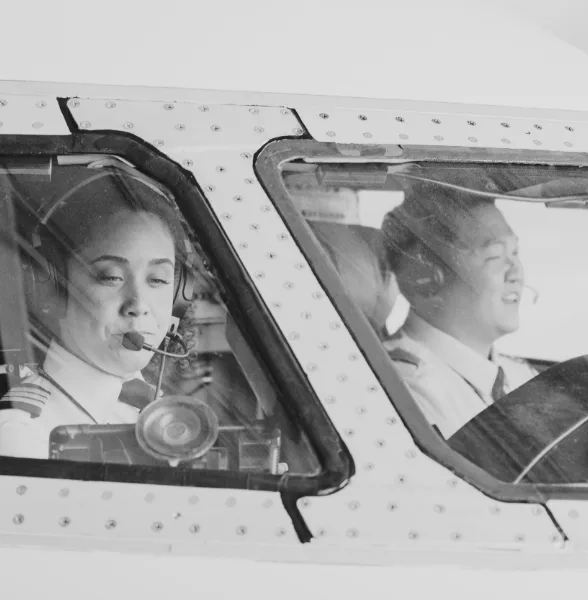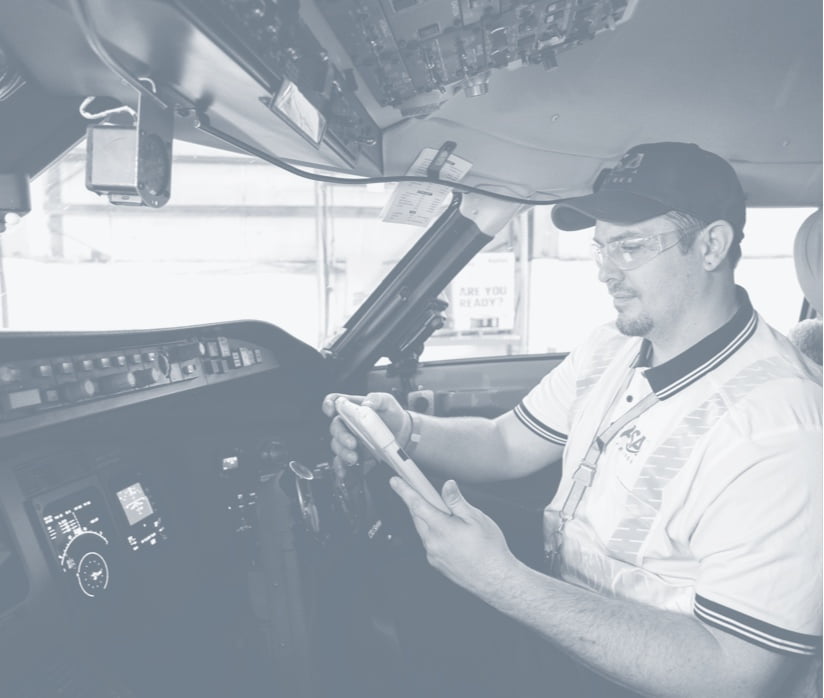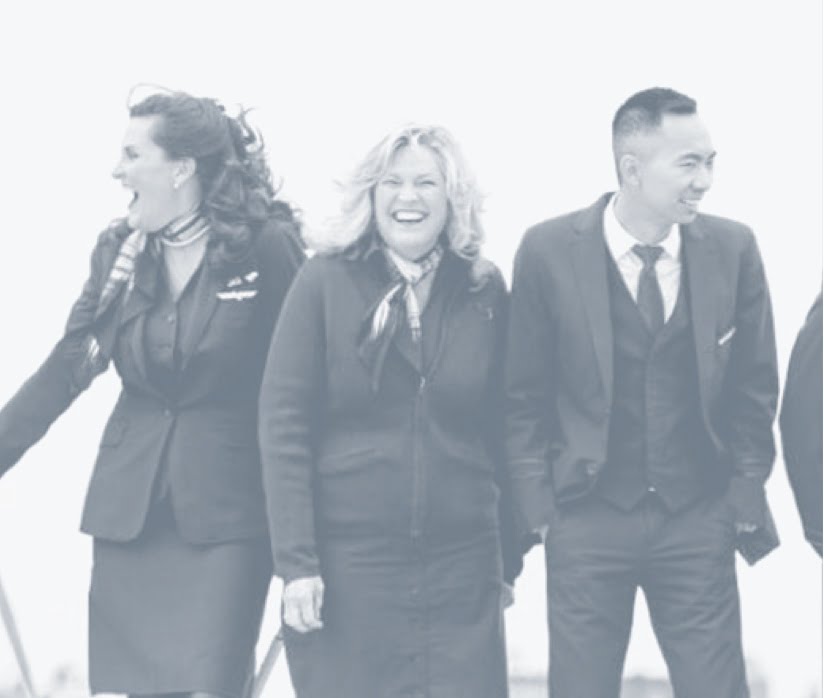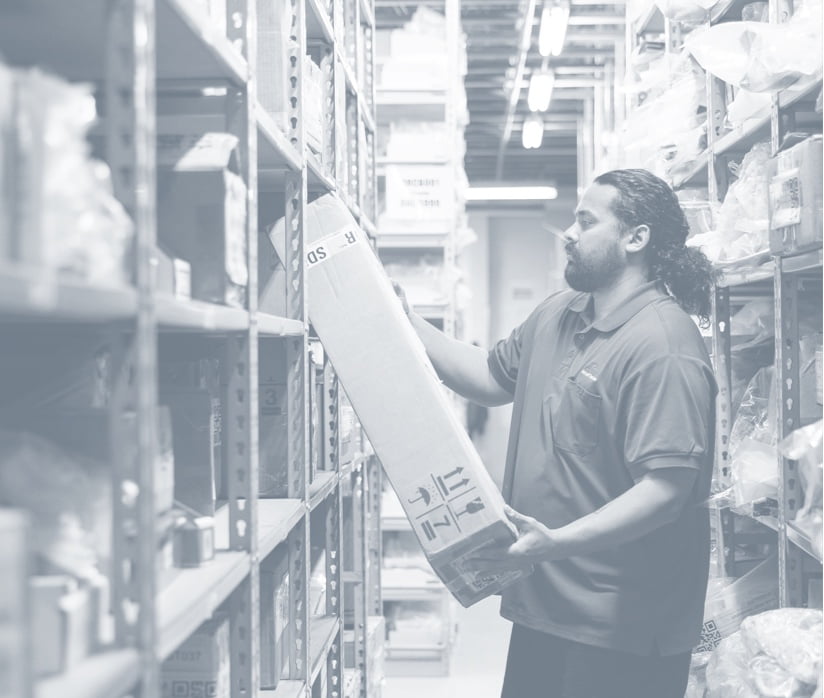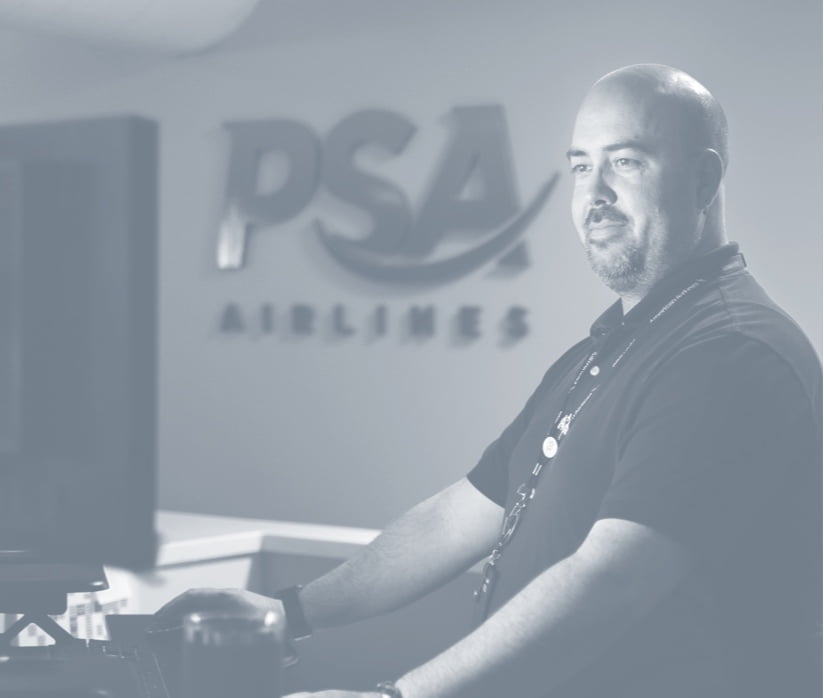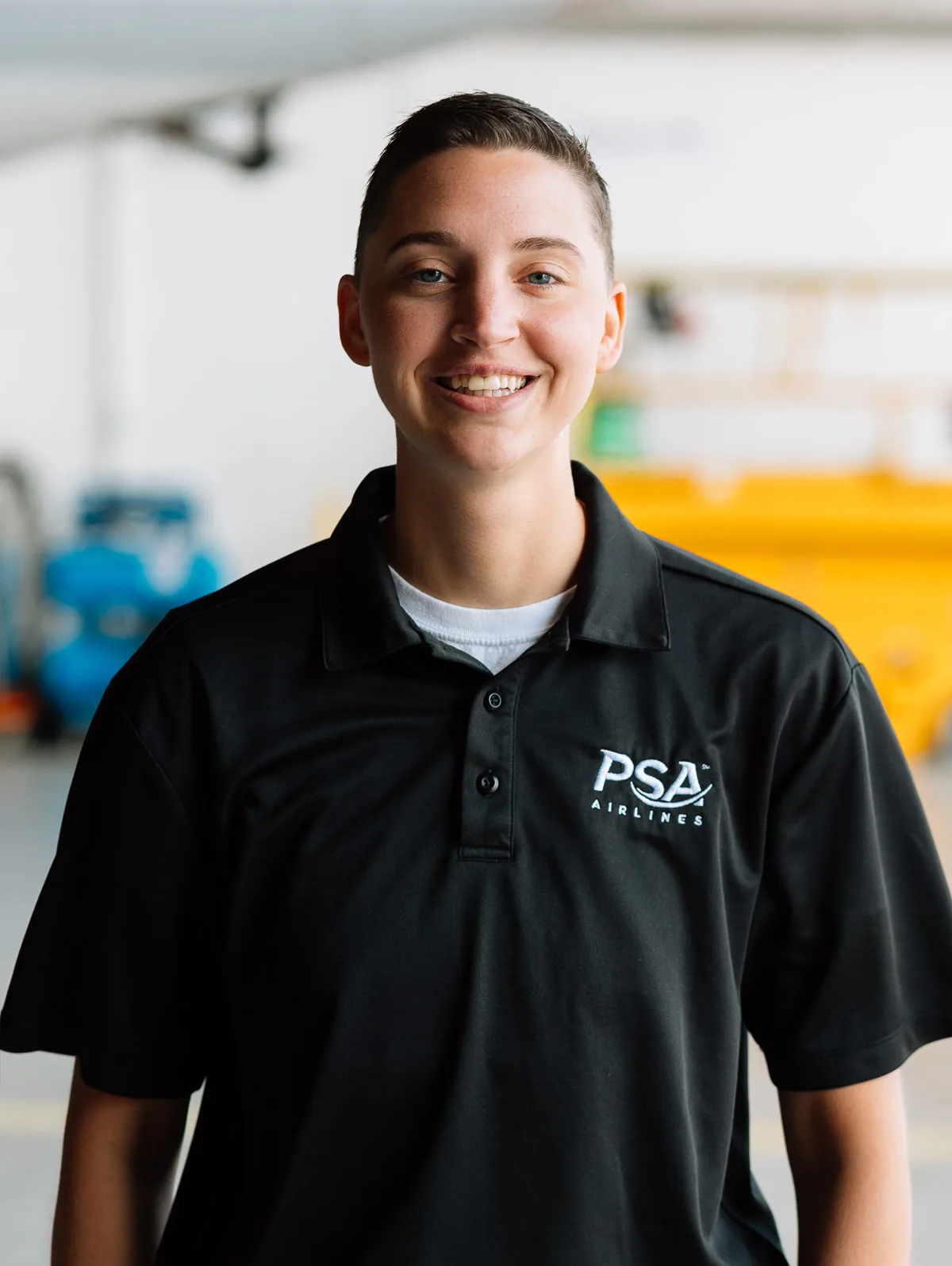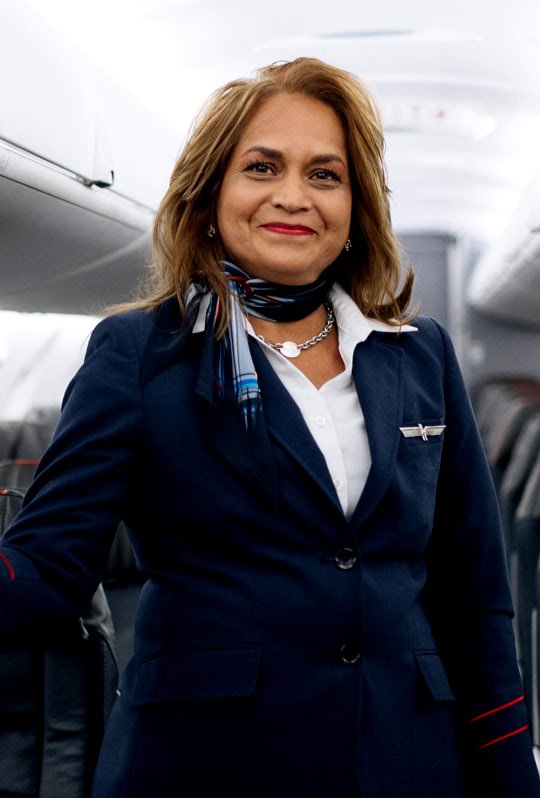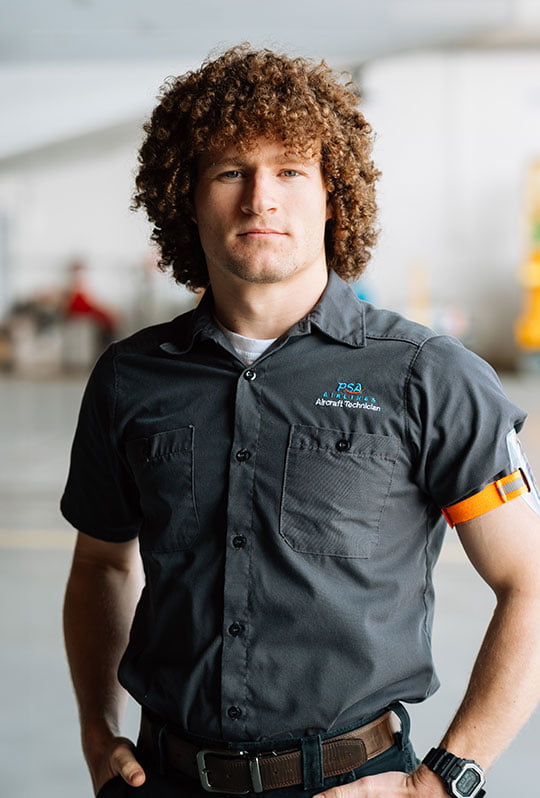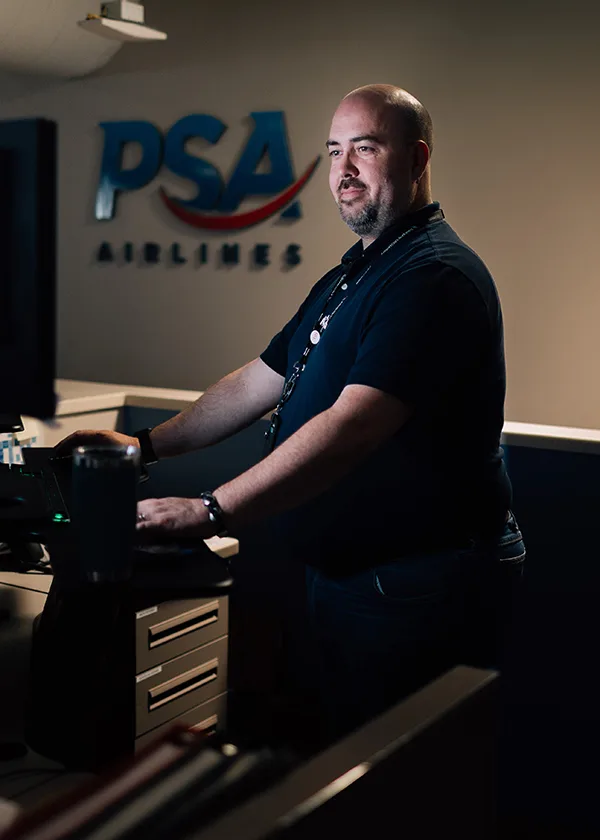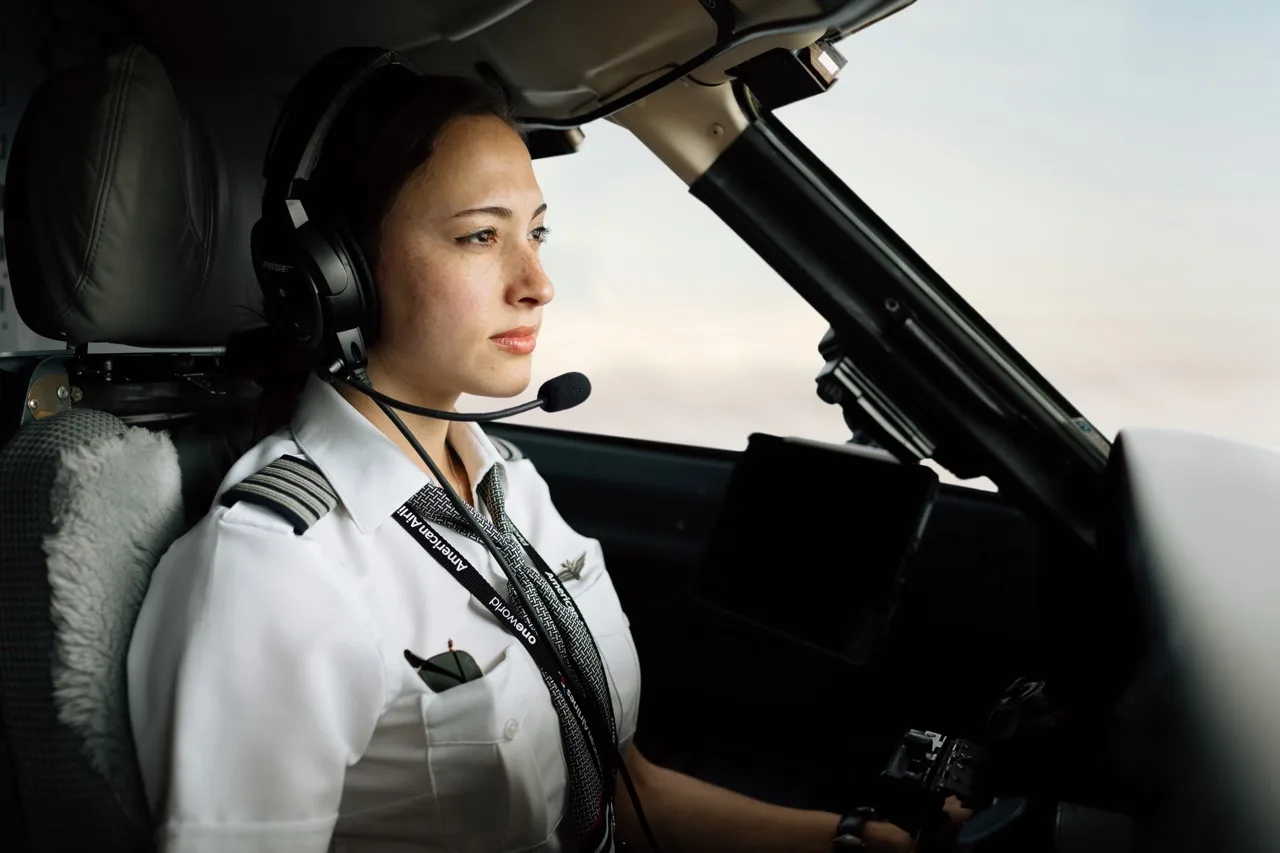Stay Current PSA Newsroom
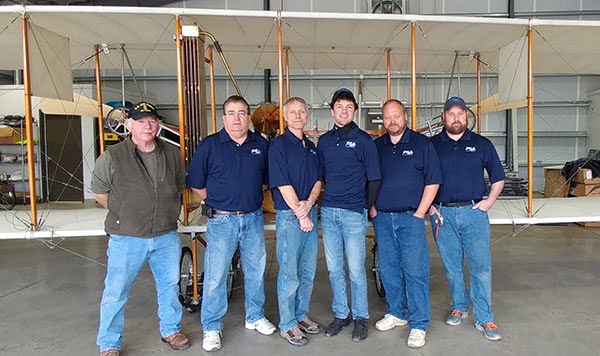
June 9, 2017
PSA team provides support and gets peek at aviation history
Watch the video here:
If you could go back in time to see how the first airplane was built and what made it fly, would you take it? Five PSA mechanics came close when they had the opportunity to work on a replica of the Wright B Flyer.
Dayton Maintenance Base Manager Ron Cotterman and his volunteer team of Jesse Robbins, Jordan Letner, Mark McDermott and Jeremiah Williams gathered on a cold April 22 day at Wright-Patterson Air Force Base to take apart a Wright Flyer replica to prepare it for transport to the Dayton Convention Center, where it was on display for the International Trails Symposium.
The process took shorter than the group expected as they carefully disconnected the flight control systems and propped it on a dolly system used for easily turning and putting it into the container for transport.
Overseeing and assisting in the process were Bob Stemple of the National Parks Service, Bill Jamison, an aircraft mechanic with the Wright B Flyer group and Tony Sculimbrene, Executive Director National Aviation Heritage Alliance.
When first approached about the volunteer opportunity, Ron Cotterman and Jesse Robbins said it sounded interesting. Both were curious how the aircraft was built and said it was neat to see.
The simplicity of the aircraft was impressive, Ron said. “It’s all cable and pins and how they used the bicycle system to make it work,” he said. The wood for the wings was also very light.
“(The disassembly) was not as difficult as we thought. Neat to see the way they handled the flight controls,” Jesse said. The weight was a concern but was not an issue after all. “I thought it would be heavier,” he said.
“What we had to disassemble was easy, I thought, with the guidance of Bill. Our people came together as a team,” said Mark McDermott.
Another intriguing feature that caught Mark’s attention was the engine. “Valentine, that built the aircraft, used a flat head model T engine. I haven’t seen one of those in years.”
Overall, the experience is one the group won’t soon forget.
“The motivation for the project was a once-in-a-lifetime-experience to put hands on one of these first aircraft,” said Mark. “Even though it was a replica, you could see the workmanship and care to make this Wright B Flyer look and feel real. To see the runway out at Huffman Prairie where history was made was a humbling experience.”



